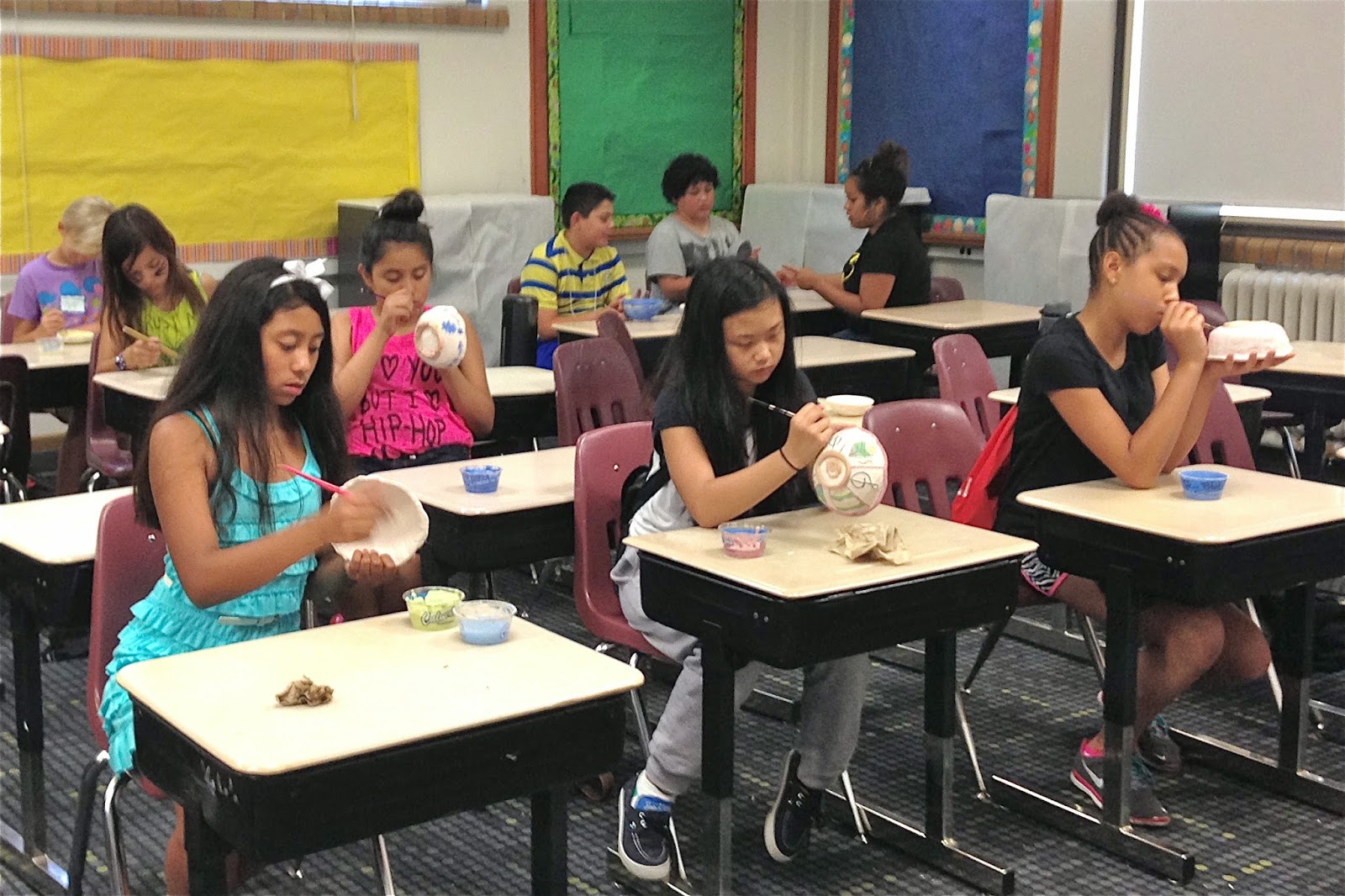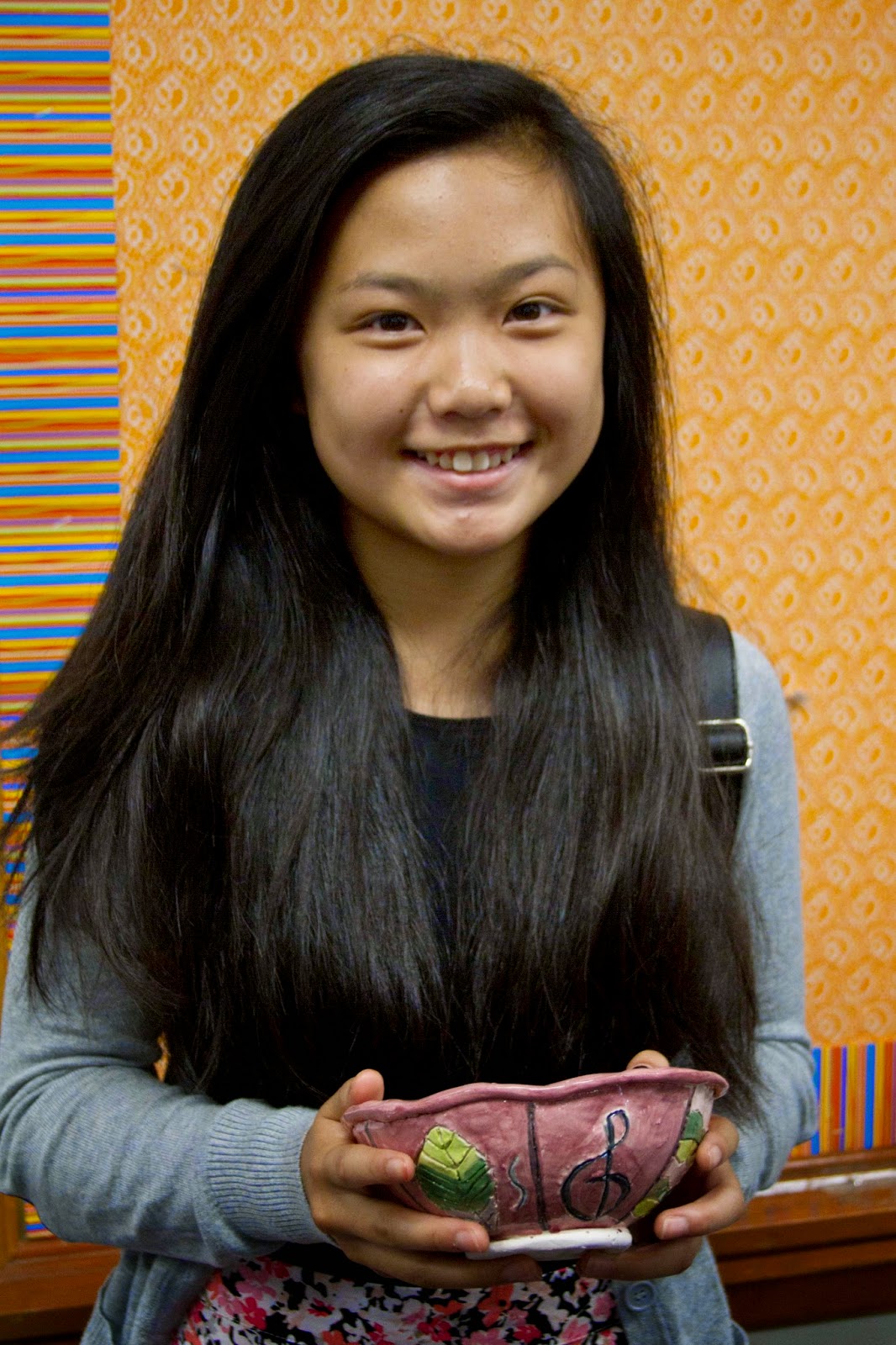 I will be teaching a clay sculpture class this winter for high schoolers. We will meet every school-day afternoon for nine weeks. It is an opportunity to delve deeper with a group of kids into the wide range of possibilities that clay allows than I have ever gone. So I have been gathering a collection of some of my previous projects and ideas for this class and putting them together into a curriculum.
I will be teaching a clay sculpture class this winter for high schoolers. We will meet every school-day afternoon for nine weeks. It is an opportunity to delve deeper with a group of kids into the wide range of possibilities that clay allows than I have ever gone. So I have been gathering a collection of some of my previous projects and ideas for this class and putting them together into a curriculum.
 We will probably start off with simple tiles rolled out and then use adding and subtracting techniques to create a design. I made relief tiles with a group of kids while teaching ArtAdventure through the MIA. It is a great beginning level project because of the two dimensional aspect of the flat surface, while starting to introduce some 3D elements into it.
We will probably start off with simple tiles rolled out and then use adding and subtracting techniques to create a design. I made relief tiles with a group of kids while teaching ArtAdventure through the MIA. It is a great beginning level project because of the two dimensional aspect of the flat surface, while starting to introduce some 3D elements into it.
 We can then move on to simplified 3D animal and human figures. This project requires only pinching and prodding to create with a minimal amount of detail work, using just a toothpick. These pinched character pieces really come alive with ceramic acrylics.
We can then move on to simplified 3D animal and human figures. This project requires only pinching and prodding to create with a minimal amount of detail work, using just a toothpick. These pinched character pieces really come alive with ceramic acrylics.
 I also want them to have a chance to work with balloon-assisted forms, a technique I learned from Kevin Caufield at the Northern Clay Center many years ago. You start with a balloon onto and around which you add clay. Human busts and animals are typical ideas for balloon sculpture, but for a geography project with my kids I had them make the earth this way. It is a simple way to get a larger, hollowed out shape.
I also want them to have a chance to work with balloon-assisted forms, a technique I learned from Kevin Caufield at the Northern Clay Center many years ago. You start with a balloon onto and around which you add clay. Human busts and animals are typical ideas for balloon sculpture, but for a geography project with my kids I had them make the earth this way. It is a simple way to get a larger, hollowed out shape.
 And of course I want them to build a three-dimensional piece from slabs. I had the TeenVenture classes this past summer build structures that would house someone or something. They kids added design elements to the clay, created an environment for their structure, and then added their pinched clay characters. The possibilities with slabs of clay are really endless, and I loved seeing the variety of homes that were built.
And of course I want them to build a three-dimensional piece from slabs. I had the TeenVenture classes this past summer build structures that would house someone or something. They kids added design elements to the clay, created an environment for their structure, and then added their pinched clay characters. The possibilities with slabs of clay are really endless, and I loved seeing the variety of homes that were built.
 For the final project I would like them to experiment with the human form. To make such a complicated shape, a wire skeleton needs to be created, carefully considering proportions. Because our eye is highly attuned to the human figure, we detect flaws easily. It will take patience and experience to execute a proper shape that I hope they will have gained through the first weeks of the class. I tested this project out on my own daughter, who is 15, to see how she would fare. The photo below is of her human figure study (unglazed).
For the final project I would like them to experiment with the human form. To make such a complicated shape, a wire skeleton needs to be created, carefully considering proportions. Because our eye is highly attuned to the human figure, we detect flaws easily. It will take patience and experience to execute a proper shape that I hope they will have gained through the first weeks of the class. I tested this project out on my own daughter, who is 15, to see how she would fare. The photo below is of her human figure study (unglazed).
 I am excited to see what ideas and capabilities the high school-aged students at Washington School will have. The younger students I typically teach clay work to have always impressed me with what even they can accomplish. So with the added class time coupled with a higher degree of maturity, there should be some amazing sculptures materializing this winter.
I am excited to see what ideas and capabilities the high school-aged students at Washington School will have. The younger students I typically teach clay work to have always impressed me with what even they can accomplish. So with the added class time coupled with a higher degree of maturity, there should be some amazing sculptures materializing this winter.
Bring on the kids and the clay!





 One of the owner's daughters told me they will be having more workshops like this in the future. I couldn't have been happier with the day's workshops, and so hearing about the possibility of more was that much more exciting. Spending time with other potters is inspirational for me. Discovering new techniques for teaching is a gift for my classes. And staying on top of new products keeps things fresh. I am so thankful for having been given this opportunity. A sincere thanks to both Continental Clay and Amaco.
One of the owner's daughters told me they will be having more workshops like this in the future. I couldn't have been happier with the day's workshops, and so hearing about the possibility of more was that much more exciting. Spending time with other potters is inspirational for me. Discovering new techniques for teaching is a gift for my classes. And staying on top of new products keeps things fresh. I am so thankful for having been given this opportunity. A sincere thanks to both Continental Clay and Amaco.






























